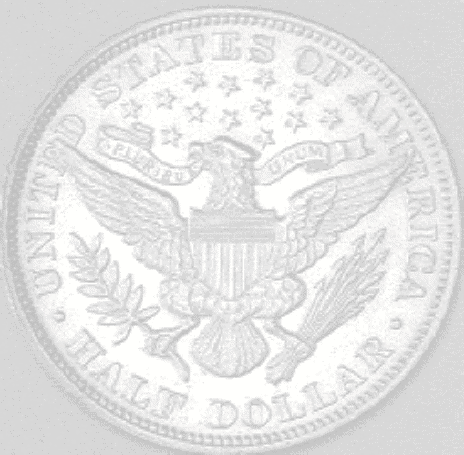
|
|
||
|
|
|
|
|
|
||

-28-
FOR BETTER OR WORSE:
Seigniorage
It was argued by the advocates of the Allison amendment (White, 201) that the "seigniorage” * should belong to the government rather than to private individuals (White, 200). Under this Act the Treasury "purchased" 291,272,018.56 ounces of silver bullion at a "cost" of 308,279,260.71 and coined 378,166,793 silver "dollars." The seigniorage amounted to 69,887,532.29 "dollars" (“Coins and Currency”, 8).
*"Seigniorage" is the profit resulting after the "cost" of the bullion and its coinage into "dollars."
The Bland-Allison Act did not
amount to a return to bimetallism, nor did it amount to a free coinage
act. It was therefore looked upon by some as "a wretched compromise"
(Yeoman, 12). Opponents of the Act predicted that since the bullion
value of the silver "dollars" was not equivalent to their purported
value, they would precipitate a panic (White, 204). Their reason was the
silver "dollar" was still fiat money. Their prediction came true (White,
204).
The Act had been vetoed by President Rutherford B.
Hayes but was passed over his veto (White, 200). An attempt was made in
the House on April 8, 1886 to pass a "free coinage" bill, but it met
defeat. On June 25, 1890, another attempt was made, and it too, met
defeat. Again, on March 24, 1892, a "free coinage" act was attempted,
and once again it was met by defeat (White, 200-01).
The Resumption of Specie
There was a different sentiment
in the Senate. On June 17, 1890, silver advocates in control of that
body passed a free coinage bill. The House refused to concur. A
committee was appointed in which the Sherman bill was reported (White,
202).
The same year in which the Bland-Allison Act was
passed, the Senate Committee On Finance passed a bill on December 21,
1878 providing for the resumption of specie payments beginning January
I, 1879. The motion was carried by a vote of 32 to 14. The House picked
it up on January 7th and concurred by a vote of 124 to 107 (White, 196).
It was largely owing to the efforts of President Hayes and his Secretary
of Treasury, John Sherman, that the issuing of "Greenbacks" was limited,
and the redemption in specie was passed (Halleck,429).
Senator Nelson Aldrich
In 1882, Congress had
established a fund of 100,000,000 "dollars" in gold as a special reserve
for the redemption of "Greenbacks." On June 21st, Senator Nelson Aldrich
proposed a bill as an amendment to the National Banking Act. In the
section relating to gold certificates, he wrote "provided that the
Secretary of the Treasury may, in his discretion, suspend the issue of
such certificates whenever the amount of gold coin and gold bullion in
the Treasury available for the redemption of United States notes falls
below 100,000,000 "dollars" (White, 206). A further amending declared
the Secretary "shall" suspend the issue of gold certificates at such
time.
The purpose of the bill was to prevent holders of
"Greenbacks" from withdrawing gold from the Treasury, re-depositing it
in the Treasury, and taking gold certificates for it, "thus possessing
themselves perhaps of all the gold in the Treasury" (White, 206), while
using the government vaults as a free depository. This would not have
been a threat if God's law of "a perfect and just weight" had been the
rule. Paper "money" was again the cause of economic unrest, and the
result was a minor crisis --a warning of things to come. In 1885, the
Treasurer of the United States placed the 100,000,000 "dollars" in gold
in a separate fund "reserved for the redemption of United States notes”
(White, 207).
